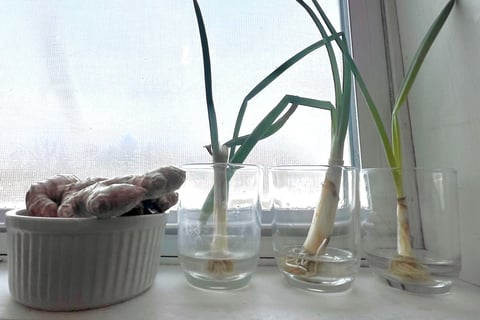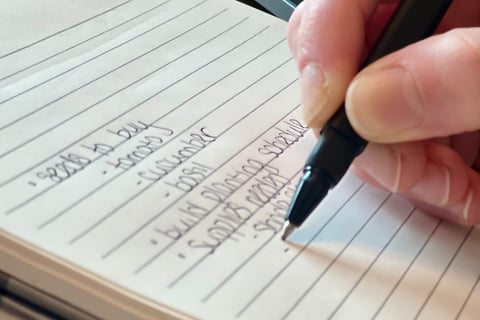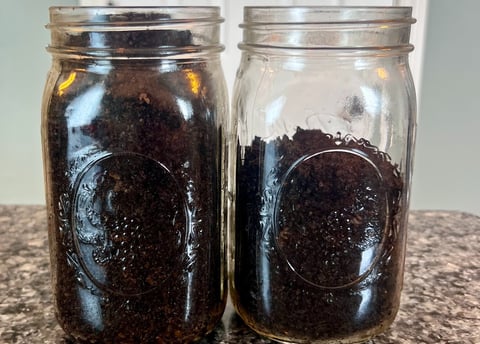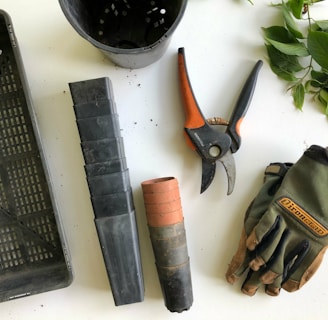February Home Garden Planning Checklist
Don't forget these six things that should be on your garden checklist! While winter is here, now is the time to start garden planning for spring. Discover what you can do over winter to get the most out of your home garden next growing season!
BLOG
2/7/20255 min read
Hello Gardeners!
Even though it’s mid-winter in the Midwest, the growing season never truly ends. We’re going to explore how the change of the seasons, changes the way we garden.
Now is the best time to work on our indoor garden and plan for the next outdoor growing season. We will check in every month to see what sorts of things we can do to easily encourage maximum harvest!
February Garden Checklist
1. Put your kitchen scraps to work!
Save those seeds! Seeds from vegetables like tomatoes, peppers, and squash just end up in the trash. Why not dry and save them for your garden?
Before you throw out those vegetable cuttings, see if they could be regrown. Some vegetables and herbs can regrow from cuttings with little effort. Vegetables like celery, carrots, green onion, and lettuce can regrow by putting the base of the head in a shallow dish of water near a window. While you won’t get a whole brand-new vegetable, you can use the new growth to add to recipes and meals saving you money at the store in the long run.
Herbs like basil, thyme, and rosemary can grow roots from cuttings placed in water. Doing this over winter gives you fresh herbs all winter long and jump-starts your herb garden for the spring.
2. Start Planning Your Outdoor Garden
When planning for your spring garden it's important to consider the right things. While building your garden plan ask yourself:
What kind of space do I have?
Do you have a large garden space in your yard or are you using pots or a smaller space? Think about the kinds of plants you want to grow and their needs compared to what kind of space you're working with.
What kinds of plants do I want to grow?
Consider what conditions the plants you want to grow need, such as their ideal growing zones, space needed, lighting, soil requirements, watering, and fertilization.
What plants do and don’t grow well together?
Once you choose what plants you want to grow. Learn about their companion plants as well as plants that don’t work well planted near each other. Companion plants can enhance the performance of each other while plants that aren’t compatible can hinder growth. This is important to consider when deciding where to put things in your garden.
What are my lighting conditions like?
Do you have full sun, shady areas, areas that get both sun and shade, or a mix of everything around your home? Make note of how your growing space orients with a compass. Typically southern exposed areas may get more sun than northern exposed areas. While areas exposed to the east or west may get partial sunlight in a day. Note how the sun moves and projects light in your growing space over a day as well as objects that may obstruct or enhance lighting.
Will I grow my plants from seed or transplant them from a store?
If you plan to grow your garden from seed, start building your growing schedule now so you are prepared when it's time to start planting. Find out when you should plant your seeds and how long it will take them to grow before they are ready to go outside. Check your local weather to see when the last frost date is for your area.
If you’re growing your garden from transplants bought at a store or a local greenhouse, check to see what the best-growing conditions for those plants are before you buy them. From personal experience, I would rethink buying the lettuce transplant from the greenhouse during the hottest point of the year….unless you want to save seeds…because that lettuce bolted and began flowering within a week of me planting it….and I didn’t get much of a harvest. While it may reseed itself, results may vary. So even though they’re still selling it at the store, it may not be the best time of the year.
3. Seed shopping
If you plan to grow your garden from seed now is the best time to buy the seeds so you have them when you are ready to start planting. Many claim this is also the best time of the year for seed shopping due to the larger variety and less likelihood of shortages or things being out of stock. You can buy seeds anywhere that works for you and your garden goals. Whether you want to experiment with hybrids, grow all organic, or grow with the seeds available at the dollar store, this is the time to stock up for the year.
4. Wait! Don’t Toss That Scrap!
We already touched on how you can regrow kitchen scraps. Did you know that you can also make kitchen scrap you can’t regrow work for you? Save those greens to use for your garden compost! Greens would be things such as fruit and vegetable scraps, coffee grounds, tea bags, and eggshells. You’ll also need browns for your compost. Browns are things like shredded paper, brown paper bags, and cardboard. Save and add these to your garden or compost bin/pile all year long, and your garden will have a never-ending supply of fertilizer ready whenever needed.
5. Prune fruit trees
If you have any fruit trees, now is the time to prune them while they're still dormant. By pruning your fruit trees while dormant, they aren’t put under as much stress and are less prone to disease and sickness. Be sure to research your specific fruit trees, as this isn't the case for all fruit trees.
6. Maintain garden tools
Check your garden tools for damage, and replace any as needed. Check local stores for sales on pots, tools, and bagged dirt. Make a list of any tools that you may need before the growing season begins as you plan your spring garden.
Doing these things now will make life easier come spring. Set yourself up for success.
Check back in with us next when we do a deep dive into seed shopping and garden planning. Sign up to get the latest updates so you don't miss a thing. Do you have a question or a garden topic you want to know more about? Send us an email!
Check out the articles below for more information to help you plan:
Propagating Veggies From Kitchen Scraps
Regrowing Fruits and Vegetables from Scraps
Propagate Herbs Now For Yearlong Enjoyment
Container Gardening With Vegetables
Companion Planning Chart and Guide
How and When to Transplant Seedlings












